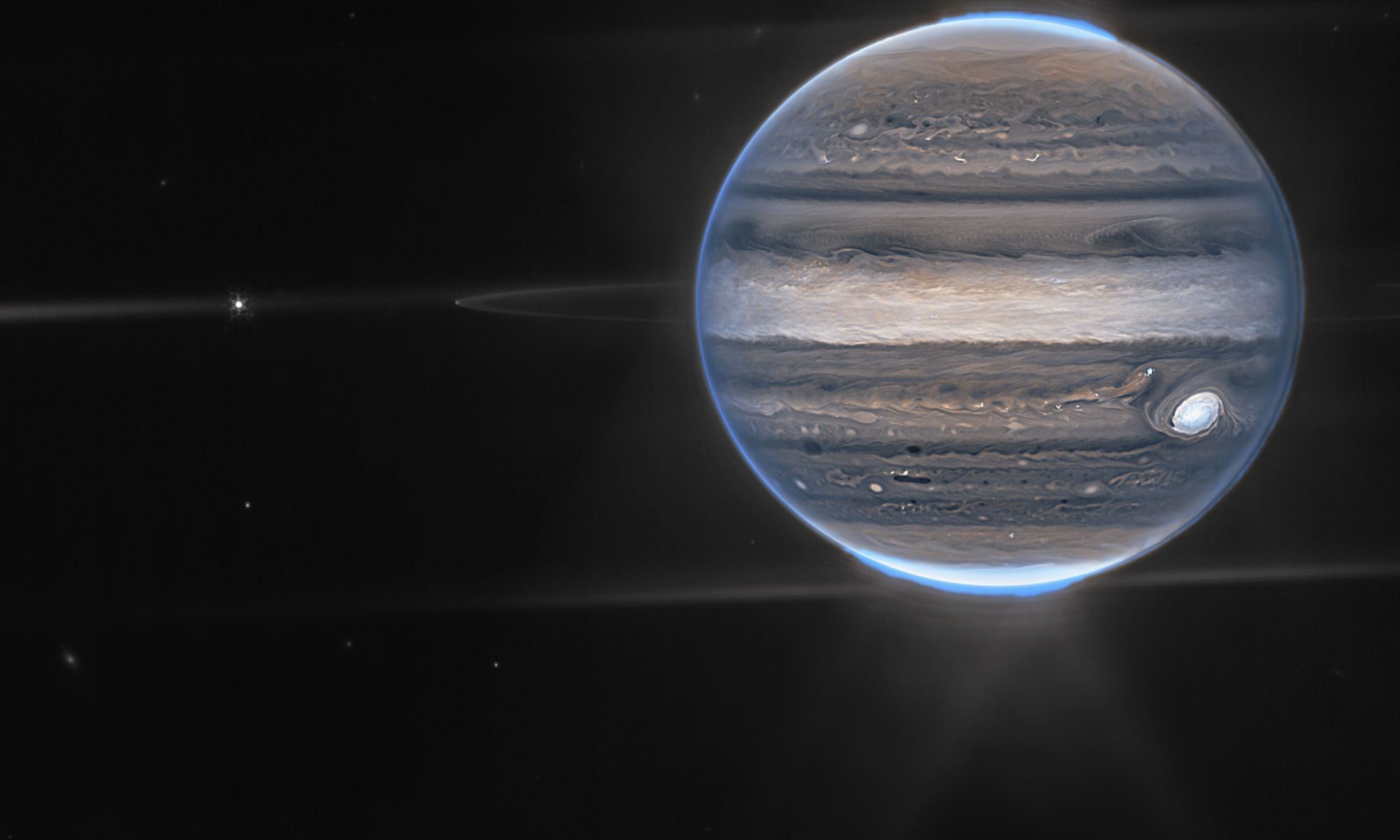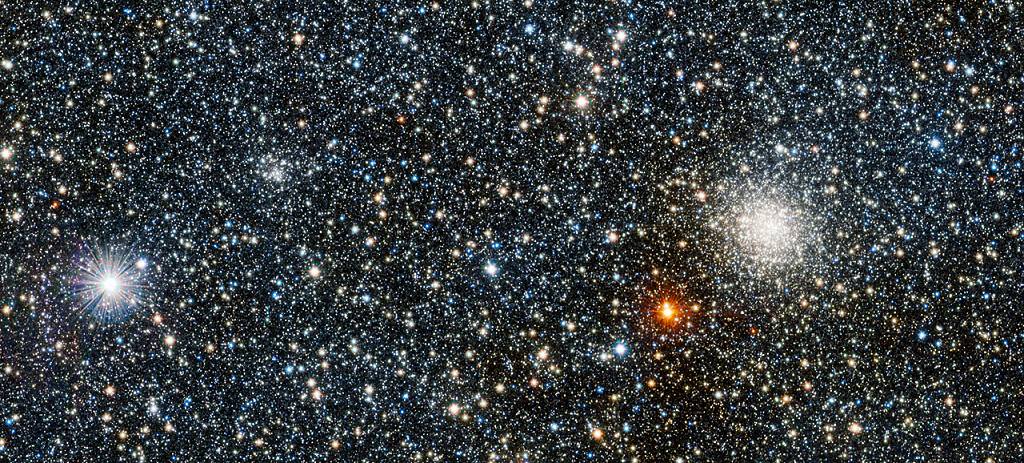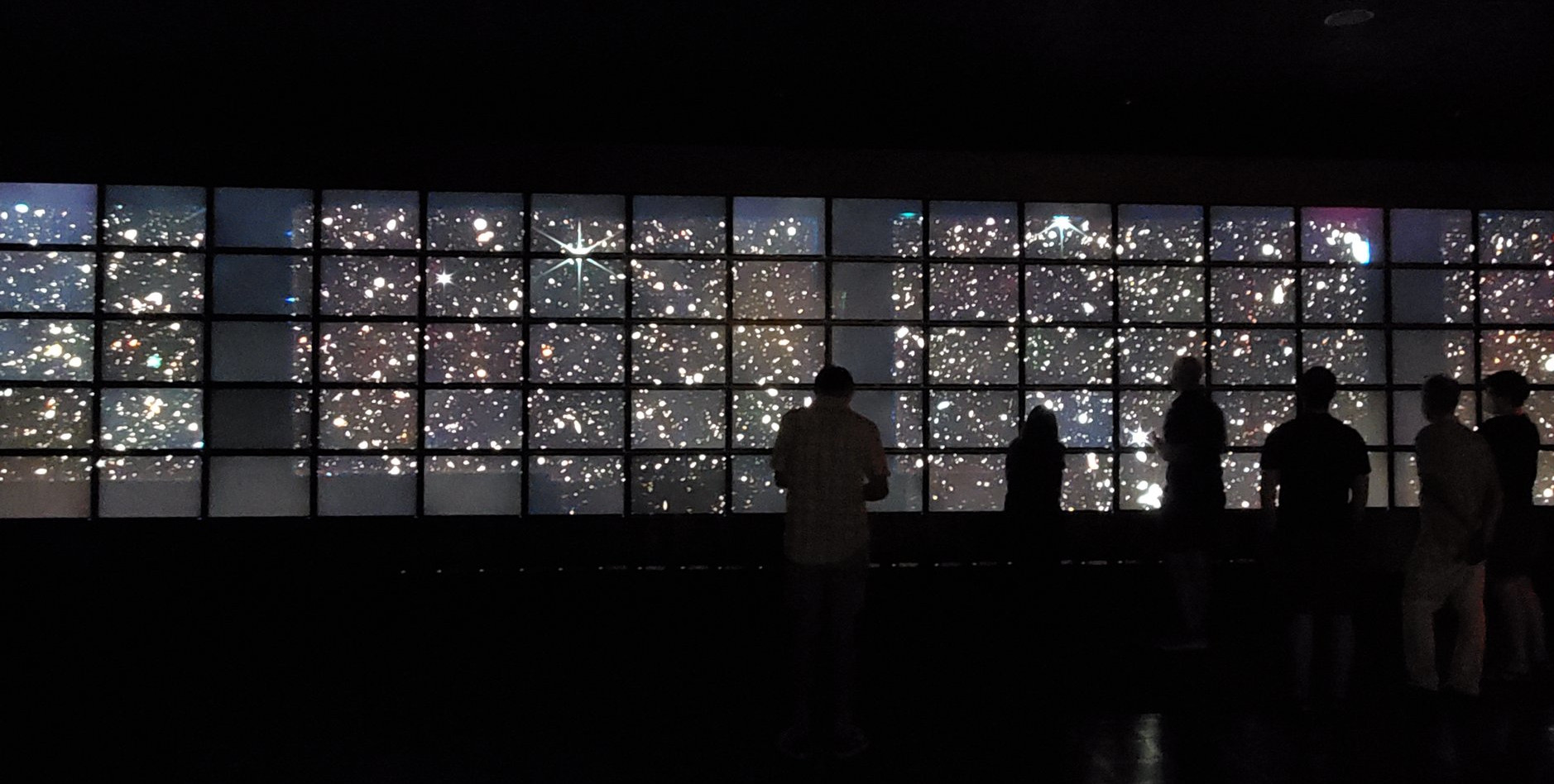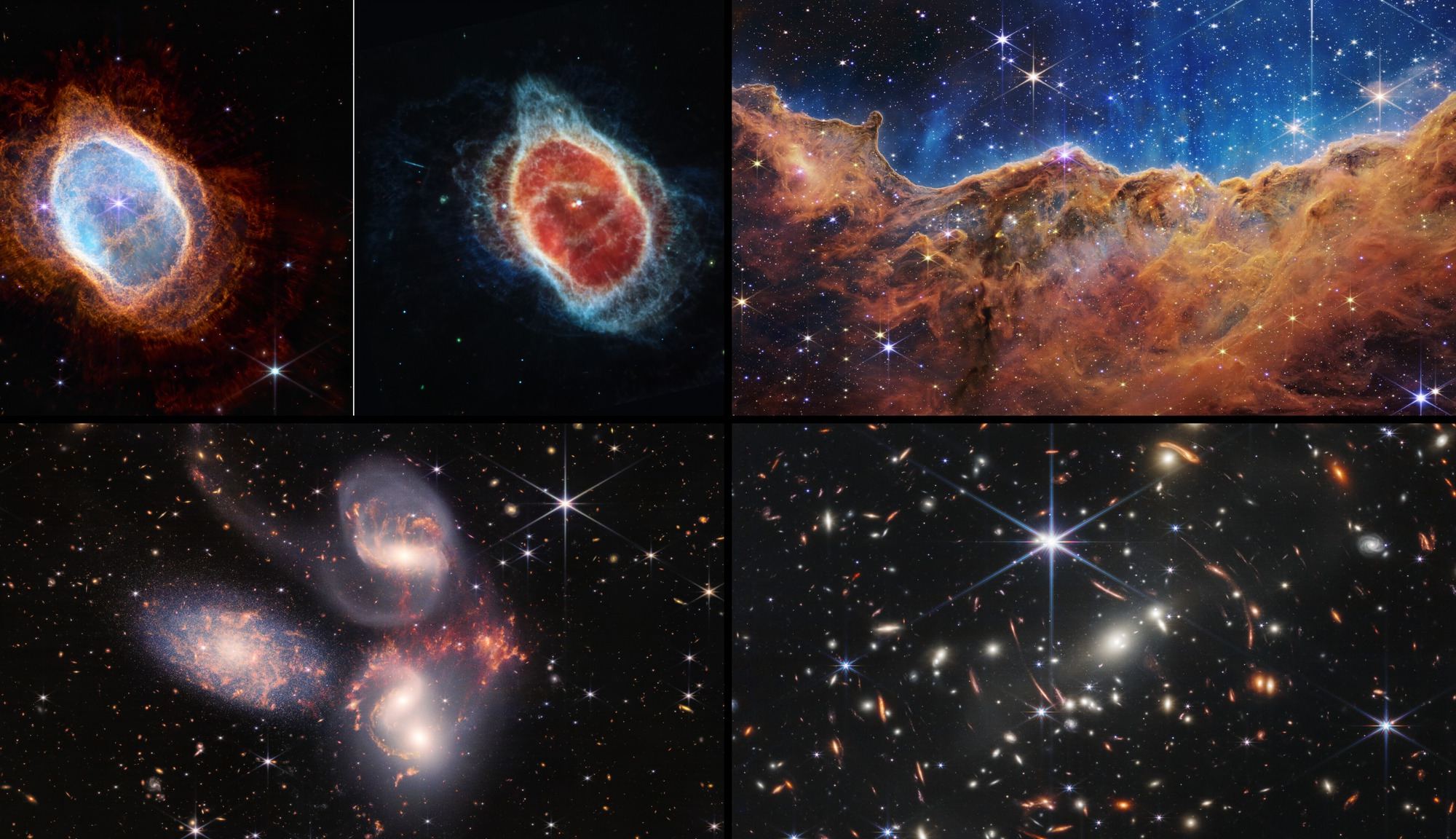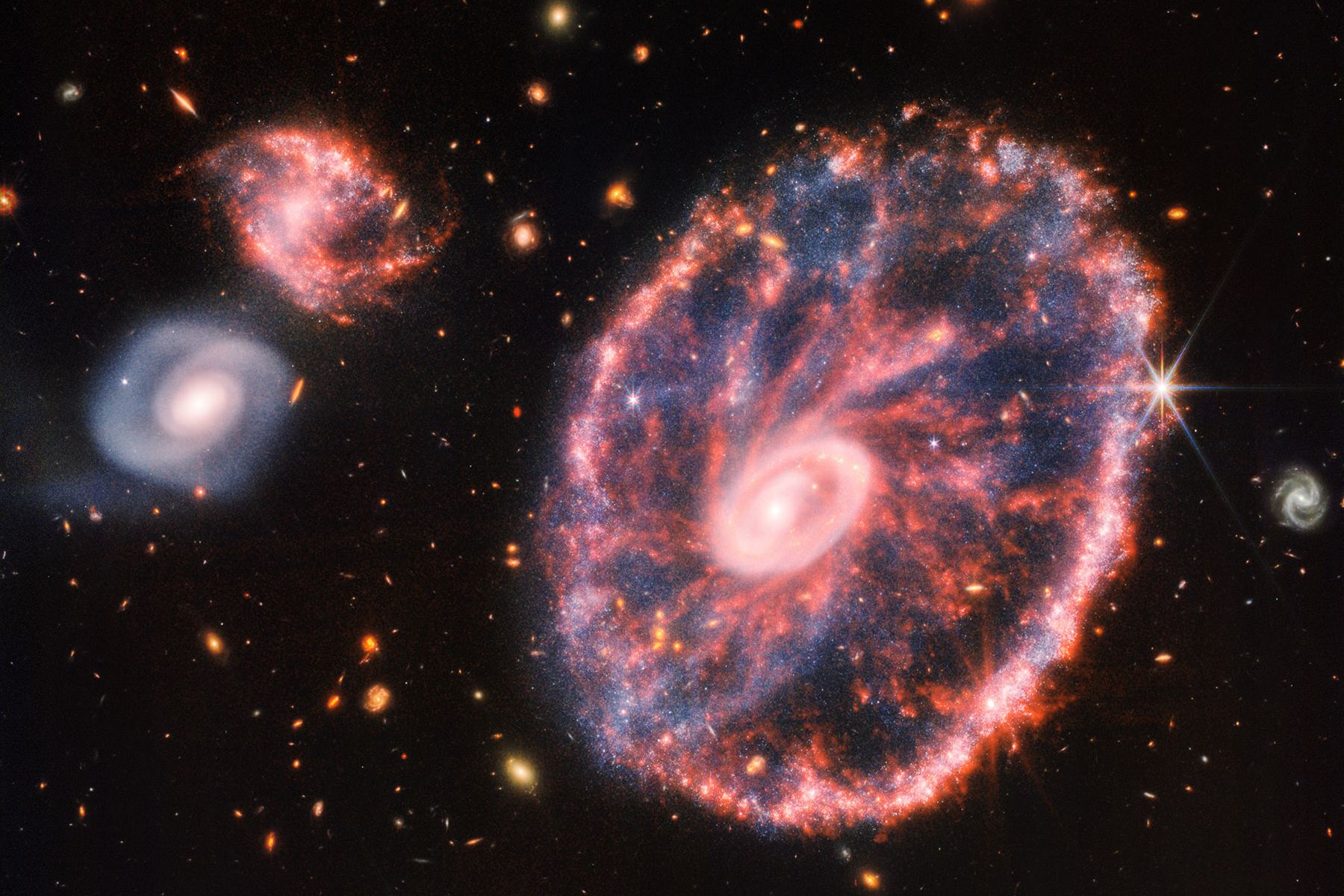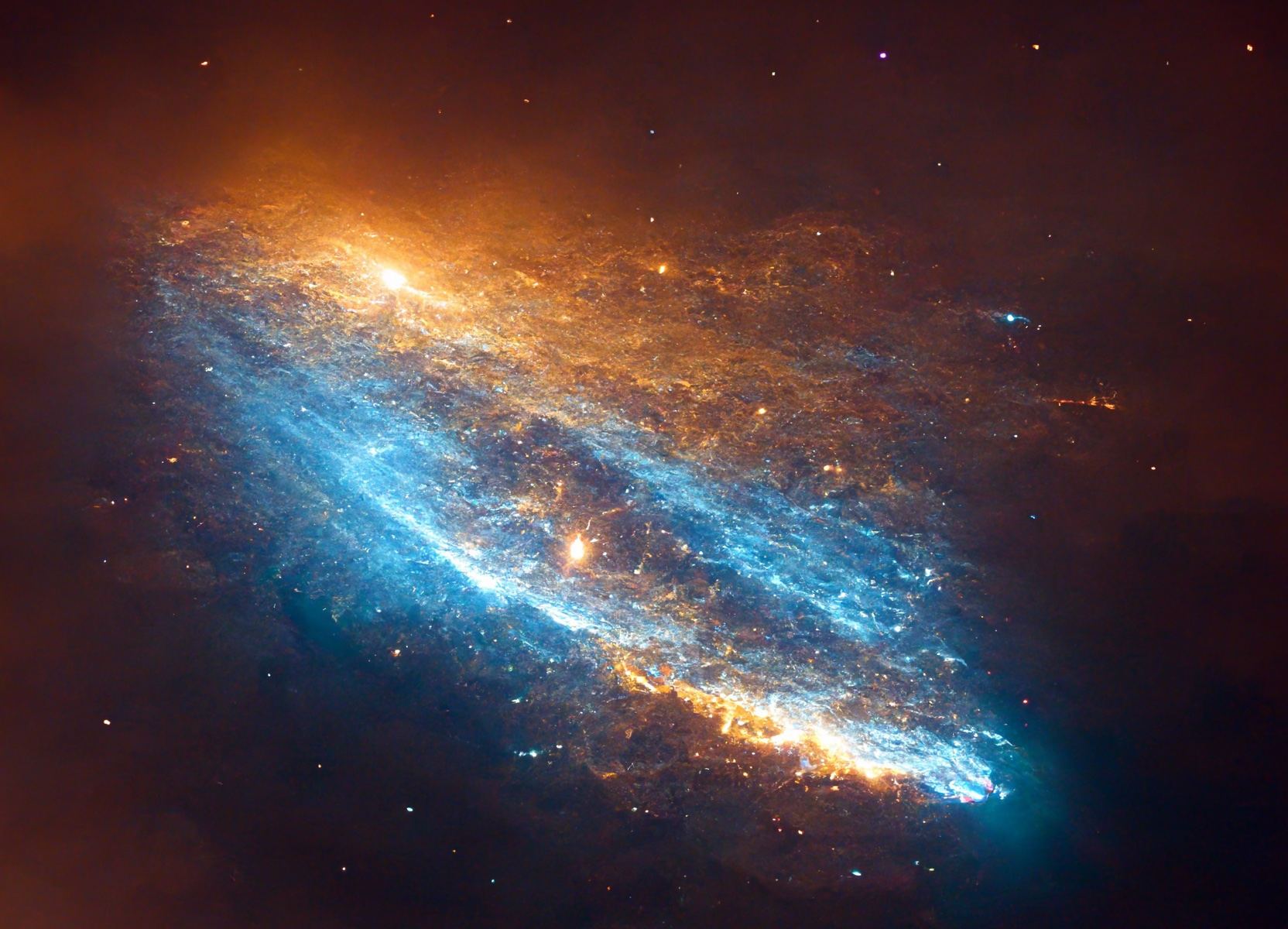NASA’s James Webb Space Telescope is designed to probe the farthest frontiers of the universe, but newly released images of Jupiter prove that the observatory can also bring fresh perspectives to more familiar celestial sights.
The infrared images reveal Jupiter’s polar auroras and its faint rings as well as two of its moons — plus some galaxies in the far background. The planet’s Great Red Spot is there as well, but because it’s seen through three of JWST’s specialized filters, it looks white rather than red.
JWST’s new perspective should give scientists a better sense of how the complex Jupiter system is put together.
Continue reading “Webb Telescope Sees Jupiter and Its Auroras in a New Light”
